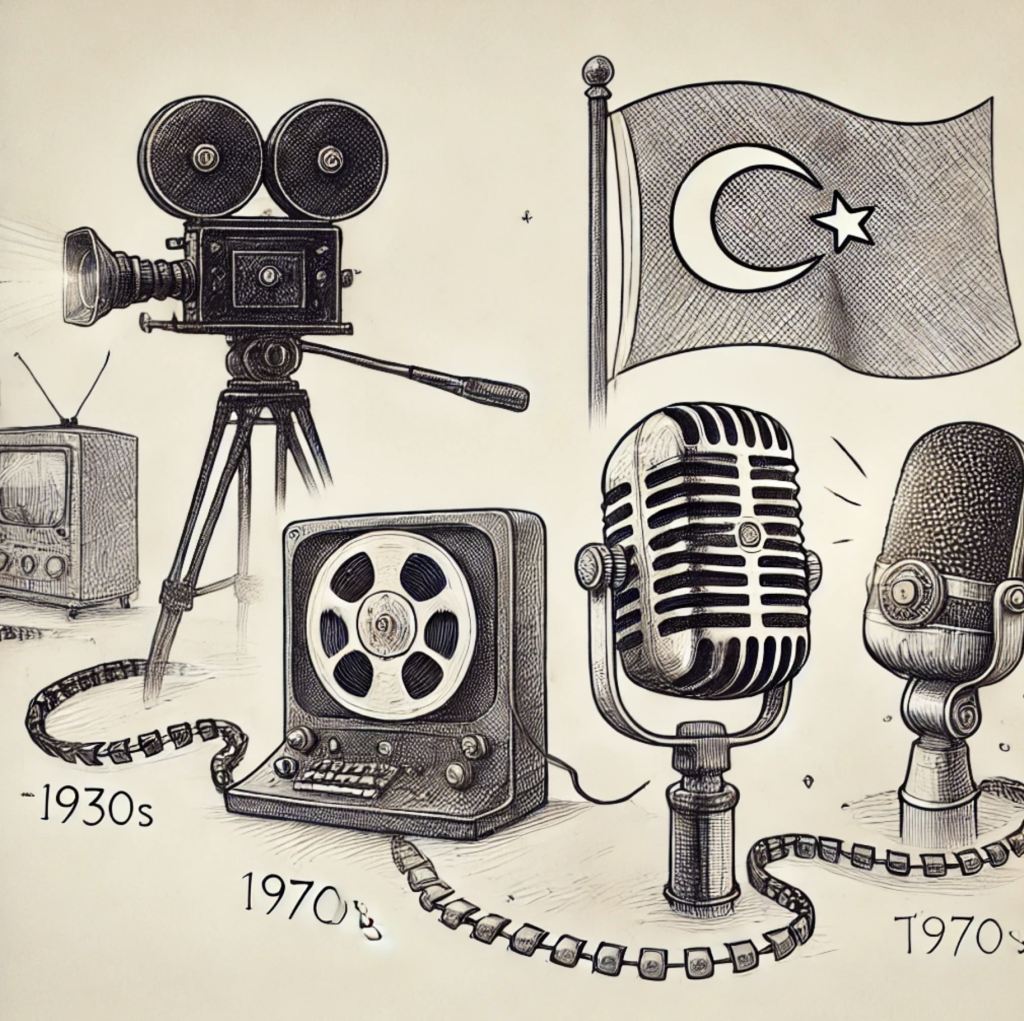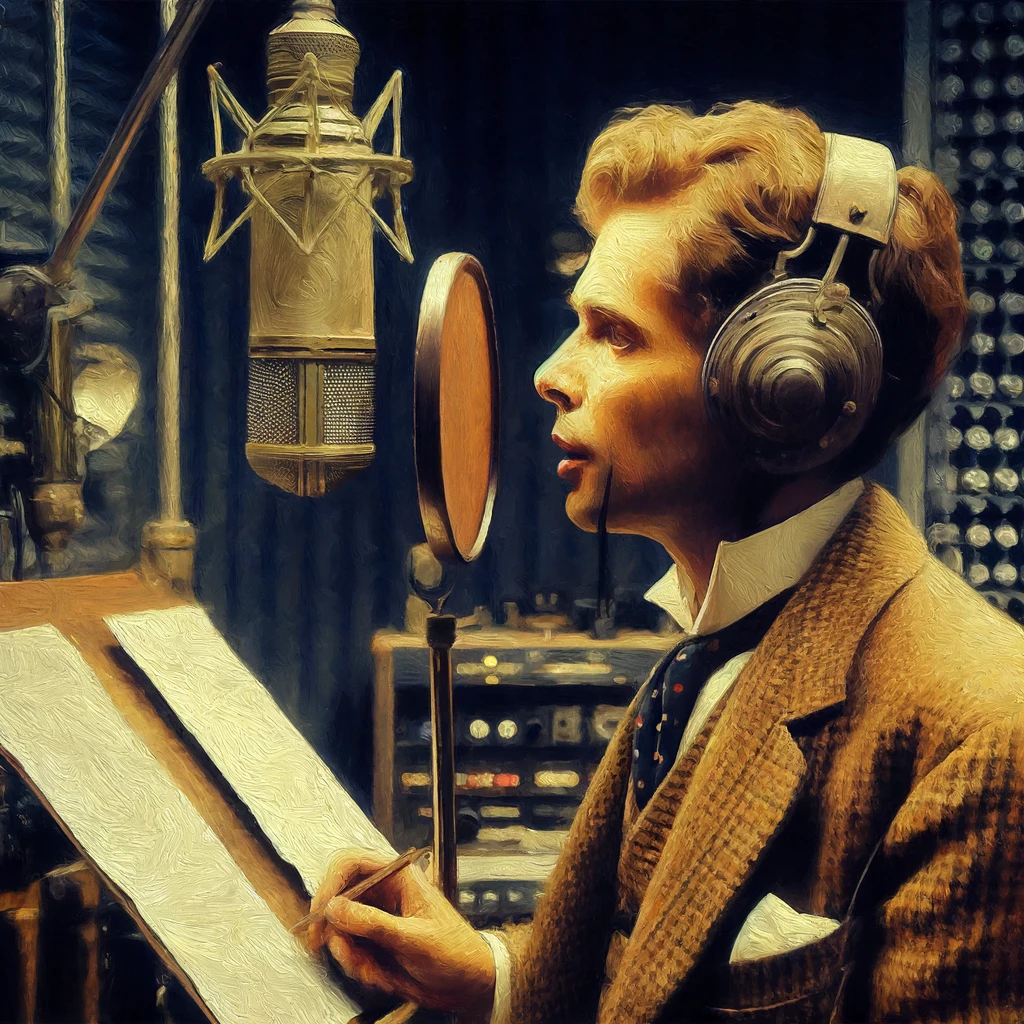Türkiye'de Seslendirme Tarihi: Geçmişten Günümüze Yolculuk
Seslendirme, Türkiye'de köklü bir geçmişe sahiptir. İlk olarak, 1930'lu yıllarda sinemanın yaygınlaşmasıyla hayatımıza girmiştir. Yabancı filmlerin Türkçe olarak sunulması için dublaj çalışmaları başlamıştır. Bu dönem, seslendirme sanatının temellerinin atıldığı yıllardır. İlk denemeler sınırlı teknik imkânlarla yapılmıştır. Ancak, bu çalışmalar geleceğin seslendirme dünyasına yol açmıştır.
1950'ler ve Altın Çağ
1950'li yıllar, Türkiye'de seslendirme sanatının altın çağıdır. Sinema sektörü hızla büyürken, dublaj teknikleri gelişmiştir. Bu dönemde seslendirme, Türk filmleri için vazgeçilmez bir unsur olmuştur. Sadri Alışık ve Adile Naşit gibi sanatçılar hem oyunculuklarıyla hem de seslendirme yetenekleriyle ön plana çıkmıştır. Stüdyolar daha modern hale gelmiş, profesyonellik artmıştır. Seslendirme artık bir sanat dalı olarak kabul edilmeye başlamıştır.
Televizyon ve Seslendirme
1970'li yıllarda televizyonun yaygınlaşmasıyla seslendirme sektörü de büyümüştür. Çocuk programları ve çizgi filmler, seslendirme sayesinde kültleşmiştir. “Şeker Kız Candy” ve “Dallas” gibi diziler dönemin unutulmazları arasına girmiştir. Ayrıca, reklamların artması seslendirme sektörüne yeni bir boyut kazandırmıştır.
Günümüzde Türkiye'de Seslendirme
Bugün Türkiye, seslendirme konusunda dünyada saygın bir yere sahiptir. Teknolojinin gelişmesiyle sektör daha da genişlemiştir. Seslendirme artık sinema ve televizyonla sınırlı değildir. Reklam, dijital platformlar ve video oyunları bu sanatın önemli bir parçası haline gelmiştir.
Sonuç
Türkiye'de seslendirme, büyük bir gelişim süreci geçirmiştir. Bu sanat dalı, kültürümüzü zenginleştirir ve iletişimde güçlü bir araçtır. Günümüzde seslendirme her zamankinden daha değerlidir.
History of Voice Over in Turkey: A Journey from Past to Present
History of Voice Over in Turkey: A Journey from Past to Present
Dubbing is a branch of art with a long history in Turkey. Firstly, with the widespread use of cinema in our country in the 1930s, dubbing works also entered our lives. At that time, the need for dubbing arose to transfer foreign films to Turkish audiences and the first steps were taken in this field. In those years, the works carried out with limited technical means formed the cornerstones of today’s dubbing art.
The 1950s and the Golden Age of Voice Over
The 1950s are considered to be the golden age of dubbing in Turkey. During this period, the dubbing techniques used in Turkish films developed and the demand for dubbing artists increased with the growth of the movie industry. Names such as Sadri Alışık and Adile Naşit left their mark on this period not only with their acting but also with their dubbing skills. In addition, the fact that studio recordings became more professional for dubbing artists in this period brought the profession to a more prestigious point.
The Importance of Voice Over with the Spread of Television
With the spread of television in the 1970s, voice-over reached a wider audience. Especially children’s programs and cartoons became a cult thanks to voice actors. Productions such as “Dallas” and “Candy Girl Candy” were among the unforgettable shows of the period. In this process, the professionalization of voice actors and the increase in the number of voice-over studios added vitality to the sector. In addition, with the growth of the advertising sector, voice-over has moved to a different dimension.
Voice Over in Turkey Today
Today, Turkey has a respected place in the world in the field of voice-over. With the development of technology, voice-over is not only limited to cinema and television, but has spread to different sectors such as advertising, digital platforms, video games and educational content. Voice actors in Turkey also take part in international projects and carry this branch of art to a global dimension. Especially with the effect of digitalization, the demand for voice actors is increasing rapidly.
Conclusion
Voice-over in Turkey has undergone a significant evolution from past to present. This branch of art continues to be a tool that enriches our culture and builds a strong bridge in the world of communication. Dubbing is not only a technical process but also an art form and this art is gaining more and more value every day in Turkey.
History of Voice Over in Turkey: From Past to Present
History of Voice Over in Turkey: A Journey from Past to Present
Voice-over has a long history in Turkey. It first entered our lives with the spread of cinema in the 1930s. Dubbing works started to present foreign films in Turkish. This period is the years when the foundations of the art of vocalization were laid. The first attempts were made with limited technical means. However, these studies paved the way for the voice-over world of the future.
The 1950s and the Golden Age
The 1950s was the golden age of dubbing in Turkey. As the movie industry grew rapidly, dubbing techniques developed. In this period, dubbing became an indispensable element for Turkish films. Artists such as Sadri Alışık and Adile Naşit came to the forefront with their acting and dubbing skills. Studios became more modern and professionalism increased. Voice-over is now recognized as a branch of art.
Television and Voice Over
With the spread of television in the 1970s, the voice-over sector also grew. Children’s programs and cartoons became cult thanks to voice-overs. Series such as “Candy Girl Candy” and “Dallas” became unforgettable of the period. In addition, the increase in commercials brought a new dimension to the voice-over sector.
Voice Over in Turkey Today
Today, Turkey has a respected place in the world in terms of voice-over. With the development of technology, the sector has expanded even more. Voice-over is no longer limited to cinema and television. Advertising, digital platforms and video games have become an important part of this art.
Conclusion
In Turkey, vocalization has undergone a great development process. This branch of art enriches our culture and is a powerful tool in communication. Today, vocalization is more valuable than ever.








